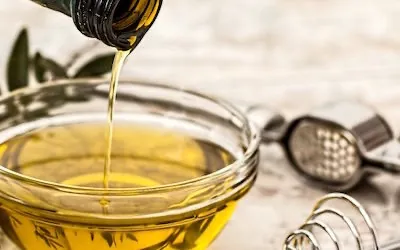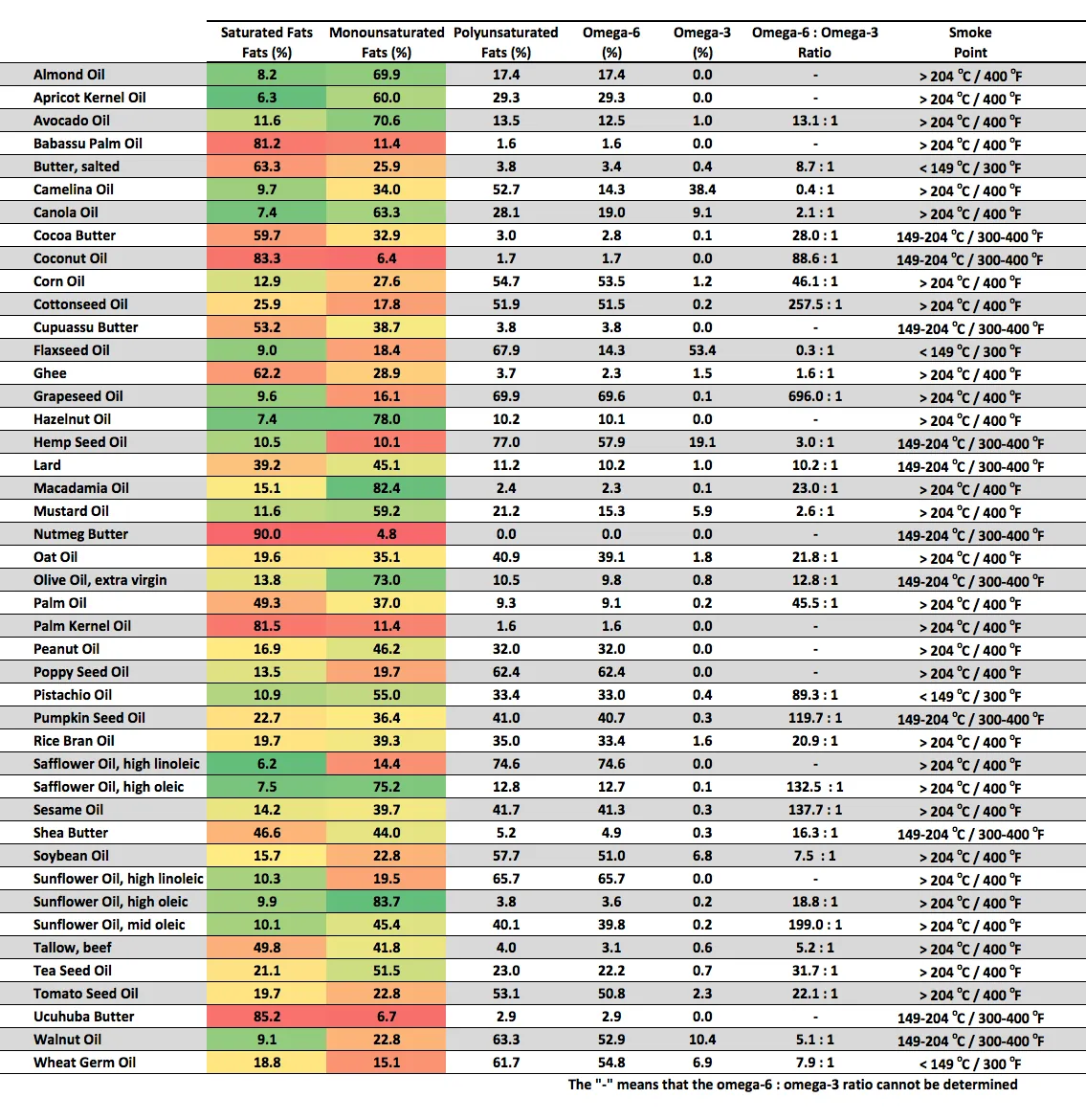Best Cooking Oils: Coconut or Another Oil
Updated | 2019-12-26
Reviewed by the NatureClaim Team

With so many cooking oils on the market today, are any of them actually nutritious? Many oils are fads, even to the point that a contestant on Shark Tank mentioned that coconut oil was a "superfood." According to basic biochemistry, unhealthy oils high in saturated fats solidify at room temperature. Now, imagine eating a saturated fat rich oil. Due to the chemical nature of these oils, they easily pack together and build-up in our bodies leading to chronic diseases. Heart disease is one example. Although the relationship between saturated fats and heart disease may be conflicting in the scientific literature, researchers agree that saturated fats are a risk factor for heart disease.
The key to finding the right cooking oil depends on several factors:
- Amount of Saturated Fats
- Amount of Monounsaturated Fats
- Omega-6 : Omega-3 Ratio
- Smoke Point
It is recommended to consume oils with less saturated fats and more monounsaturated fats. With respect to this, Almond, Apricot Kernel, Avocado, Canola, Hazelnut, Macadamia, Olive, Safflower (high oleic), and Sunflower (high oleic) Oils have ideal amounts of monounsaturated fats.
In regards to polyunsaturated fats, the omega-6 : omega-3 ratio is crucial as well. This ratio in Western diets is 15 : 1 – 16.7 : 1, but the recommended ratio should be between 1 : 1 – 5 : 1. An unbalanced ratio (i.e., excess amounts of omega-6) is associated with heart disease, cancer, and inflammatory and autoimmune diseases. Based on this ratio, Camelina, Canola, Flaxseed, Ghee, Hemp Seed, and Mustard Oils are ideal.
The smoke point is also important, especially for high temperature cooking because low smoke point oils can break-down and lead to the presence of harmful chemicals in food. More refined oils have higher smoke points. For instance, Olive Oil (see infographic below) generally has a low smoke point (this can be harmful when cooking at high temperatures), but refined Olive Oil has a smoke point greater than 204 ℃ / 400 ℉.

Canola field on the Palouse
Although Flaxseed and Hemp Seed Oil have a low omega-6 : omega-3 ratio, they have low smoke points. That leaves us with Canola Oil for high temperature cooking. Wild Canola Oil naturally has erucic acid, which is toxic at high doses, but breeding techniques have reduced the amount of this fatty acid. While oil content depends on where a plant was cultivated, which variety was grown, and how the oil was extracted, breeding techniques are always improving our cooking oils.
And no, coconut oil is not a "superfood."
Click the infographic for more details. The more green boxes, the better the oil.

Appendix:
Oils mentioned in this article include: Almond Oil, Apricot Kernel Oil, Avocado Oil, Babassu Palm Oil, Butter (salted), Camelina Oil (Frohlich et al. 2005), Cocoa Butter, Coconut Oil, Corn Oil, Cottonseed Oil, Cupuassu Butter, Flaxseed Oil, Ghee, Grapeseed Oil, Hazelnut Oil, Hemp Seed Oil (Oomah et al. 2002), Lard, Macadamia Oil (Maguire et al. 2004), Mustard Oil, Nutmeg Butter, Oat Oil, Olive Oil (extra virgin), Palm Oil, Palm Kernel Oil, Peanut Oil, Poppy Seed Oil, Pistachio Oil (Arranz et al. 2008), Pumpkin Seed Oil (Ryan et al. 2007), Rice Bran Oil, Safflower Oil (high linoleic), Safflower Oil (high oleic), Sesame Oil, Shea Butter, Soybean Oil, Sunflower Oil (high linoleic), Sunflower Oil (high oleic), Sunflower Oil (mid oleic), Tallow (beef), Tea Seed Oil, Tomato Seed Oil, Ucuhuba Butter, Walnut Oil, and Wheat Germ Oil. The infographic has more details on each oil.
Reference(s):
Frohlich A, Rice B. Evaluation of Camelina sativa oil as a feedstock for biodiesel production. Industrial Crops and Products. 2005.
Oomah BD, Busson M, Godfrey DV, Drover JC. Characteristics of hemp (Cannabis sativa L.) seed oil. Food Chemistry. 2002.
"Best Cooking Oils" was written by Korey Brownstein, Ph.D.
